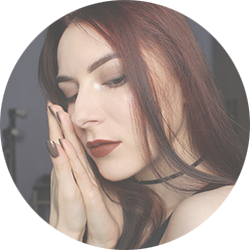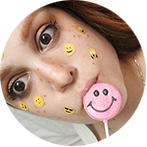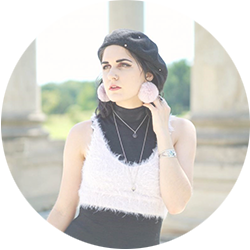







Welcome Back
Sign in to be closer to your community!
Follow other divas, like and comment
on their posts, message them, and see
who loved your posts!
Invalid username or password
You have not verified your account by clicking on the link we sent you via email. Please check your email folders (including your Spam folder) and click on the verify link sent.
Email is required
Password is required








Join FashionPotluck.com
Create your own profile in order to create content, follow other divas and like their posts, use our own messenger, and be a part of a growing international women community!
WELCOME TO OUR COMMUNITY
Fashion Potluck -
the first social media
platform for women.
You are free to read/watch & create content,
express your true self, and interact with others.
Join for free
Already a member? Log in here.
Purchase Alert
Dear Queen, you can only buy from one seller at the time. Please finish this purchase first in order to buy from another FP member
Comments
Please select one platform to continue
Please select one platform to continue
Please select one platform to continue
Please select one platform to continue
Please select one platform to continue
Please select one platform to continue
Please select one platform to continue
Please select one platform to continue
EDITOR APPROVED
You are wondering what is this 'Editor Approved'?
Well, this is pretty awesome! In order for the post to qualify and receive this accolade, it has to have a minimum of 700 words and two images (at least one original).
Receiving this accolade means two things: 1) Your content is amazing! Good job! 2) Your content qualifies for our monetization program. Every week two of the most read posts receive monetary rewards.
Have the badge & want to monetize your content?

LIFESTYLE


Last week I was on a video chat with my brother when I froze on the screen and stayed frozen for the rest of the conversation. It got me thinking that of everything we have experienced in the past two years, this was one of the most indicative of our current lives and workplace. In the wake of the pandemic quarantine, communication of all sorts became virtual. My work environment became focused on the many processes we took for granted in-person to transitioning them all to a virtual format with mixed results. Zoom meetings were fraught with screens freezing images of people in various stages of facial expressions, and the constant advice to either mute or unmute yourself.
 Image by Alexandra Koch from Pixabay
Image by Alexandra Koch from Pixabay
If anything has felt frozen these past two years, it most certainly has been life as we have known it. We are in a state of stasis, hunkering down in quarantine to avoid any contact with the deadly virus out there sickening and killing people with abandon. Most have us have been careful to wear masks and socially distance to stop the spread although it has been more than a year, and we are still fighting. We have stayed frozen even as the pandemic has not. Yet, despite all of the tech issues we have experienced, I am most grateful that, of all the times in our history, this one was most conducive to virtual communication, and many took creative advantage.
Recently we were hit with an arctic blast of several feet of snow. The landscape looked like a peaceful Christmas card. The trees were laden with snow, and the yards and cars looked as if a white blanket had been laid over them. People donned snow gear, and walked out into the whiteness, excited to have a reason to get outside. The world was frozen. Our outdoor furniture, fountain, and statues were outlined in white, transforming my magic garden into a ghostly living space, glowing in the darkness. It reminded me of more innocent times when we were happy to be stuck in the house for days on end until the weather cleared. Little did we know a time was coming when we would be stuck in the house for months with no end in sight. Pandemic fatigue is real.
 Image by Manfred Richter from Pixabay
Image by Manfred Richter from PixabayThere are hopeful signs of thawing. A movement, like glaciers breaking and floating away. Vaccines are being administered at record speed. The tide of cases, illnesses, and deaths are slowing. There is a melting, a hope that maybe soon, very soon we can break out of our cocoons, and be out in the world again. We all want that so badly. We are ready for the end of the pandemic, but we are forever changed. The past is frozen in time as we move forward.
Great shifts in history have always changed the trajectory of the human experience, and have shaken the status quo. The year 2020 certainly counts as one of these massive shifts. 2021 began with a bit of movement forward from our frozen state although the first days of the new year left us all chilled and late in the year little has changed. There has been a cleansing of sorts but there has also been a reveal of madness, lies, and hate that had felt frozen until this pandemic. Or was it? Isabel Wilkerson's revelatory book Caste: The Origins of our Discontent, recounts a story of a mysterious event in an area of Siberia very close to the Arctic Circle in 2016 when the children of an indigenous tribe began to sicken and die from an unknown illness. It was eventually discovered that in an unprecedented thaw, a toxin that had been under the ice since 1941 had been released. It was anthrax. Wilkerson writes, "The anthrax, like the reactivation of the human pathogens of hatred and tribalism in this evolving century, had never died. It lay in wait, sleeping, until extreme circumstances brought it to the surface, and back to life." (Wilkerson 4). Sadly, this has proven all too true in recent times.
In 2013, Disney released a children’s movie called Frozen, about a young woman, who, much like King Midas and his golden finger, turned everything she touched into ice. In an effort to save her sister and her kingdom, she hides away in an ice palace she has created. Only once she can “let it go”, and embrace her gift for good, does she free herself from her isolation. “Letting it go” is definitely an exercise of faith, and one that has been a challenge these past months. We have asked ourselves to believe it will all be fine even as the mounting evidence suggested otherwise. Yet, a thaw is in place. Another shift is coming. As we begin to emerge from our man-made cocoons, what will we be like? Are we better for having been made to shelter in place for a year, and consider what is truly important in our lives, or are we angry, bitter, resentful, and sad for the losses we have endured, and may never recover from? No one can answer that question but ourselves. In the great human experiment, there is all the light and darkness we can ever imagine revealed to us. We can’t deny its existence, and we cannot look away. We can only decide how we are going to react to it.
It was fun to jump in the snow, the sounds of delighted children drifting across the expanse. It reminded me of my childhood on the far north shore of Lake Superior when for eight months of the winter we donned layers of clothing to go to school, or play outside. I remember how tired we were of snow by the time spring actually came. Kind of how we feel right now. But it's out of our control so I vow to let it go. And to unmute myself as often as I can.
Wilkerson, Isabel. Caste: The Origins of our Discontent .Random House, 2020
Main Image by Stefan Keller from Pixabay
 Image by rihaij from Pixabay
Image by rihaij from Pixabay
Comments
Related Posts
- What Makes Men’s Accessories Worth Investing In Today? by Ekim Fashion 0
- How to Plan Seasonal Plush Inventory Without Overbuying by Harnel Inc 0
- 6 Winter Season Reasons to See a Dermatologist ASAP by Monica Quinn 0
More Posts
- Affordable Embroidery Services | Free Design Assistance by Embroidery Designs 0
- Beyond the Hardwood: Finding the Fun in Absurd Physics Games like Basket Random by Suzanna Brown 0
- Why Cowboy Ties Are Making a Bold Fashion Comeback This Year by Rocky Mountain Western 0
Vote content out
Reason for voting this content out?
Reason for voting this content out?


 Login with Google
Login with Google Login with Twitter
Login with Twitter






 by
by 
Add Comments